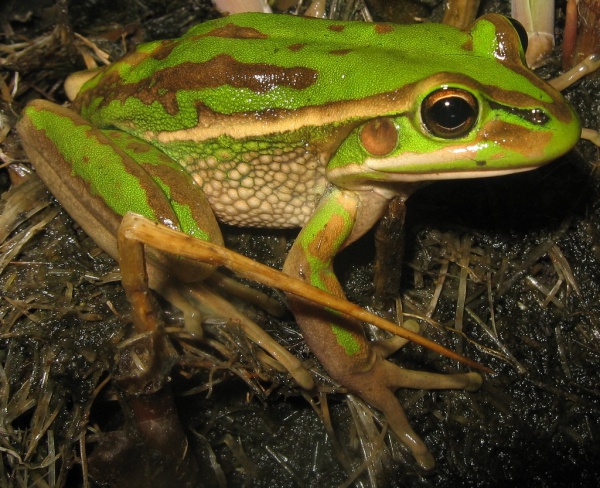Facts About Green and golden bell frog
The green and golden bell frog, also known as the green bell frog, green and golden swamp frog, and simply the green frog, is a captivating amphibian native to eastern Australia. As one of the largest frogs in the country, it can grow up to 11 cm in length. These frogs have a voracious appetite, feasting on insects, worms, and even small mice. They are mostly active during the day and become less active during the winter months. The breeding season commences during the warmer months, with males reaching maturity around nine months old, while females take about two years to mature.
The classification of the green and golden bell frog has undergone several revisions over the years, and it is now part of the *Ranoidea aurea* complex. Unfortunately, their populations have declined, and they are currently listed as globally vulnerable. The main threats to these frogs include habitat loss, pollution, invasive species, and diseases like chytrid fungus. Conservation is challenging since many of their habitats are on private lands.
These frogs are found from Byron Bay in New South Wales to East Gippsland in Victoria, but their numbers have significantly dwindled. They thrive in various habitats but prefer areas with abundant vegetation near water. Known for their daytime activity, these frogs can travel considerable distances in a day. Breeding success depends on suitable water conditions, with tadpoles taking several months to develop into adult frogs.
The green and golden bell frog is classified as vulnerable both globally and nationally. Their decline is driven by habitat fragmentation, invasive species, and habitat degradation. Conservation efforts are underway, including captive breeding programs, habitat restoration, and community awareness initiatives. Research is ongoing to manage threats such as predatory fish and chytrid fungus. Legal actions and community-driven initiatives are also in motion to protect their habitats.
Despite the challenges, various conservation programs are striving to preserve the green and golden bell frog populations. Through captive breeding, habitat restoration, and continuous research, these efforts aim to ensure that this unique species continues to thrive in Australia.
